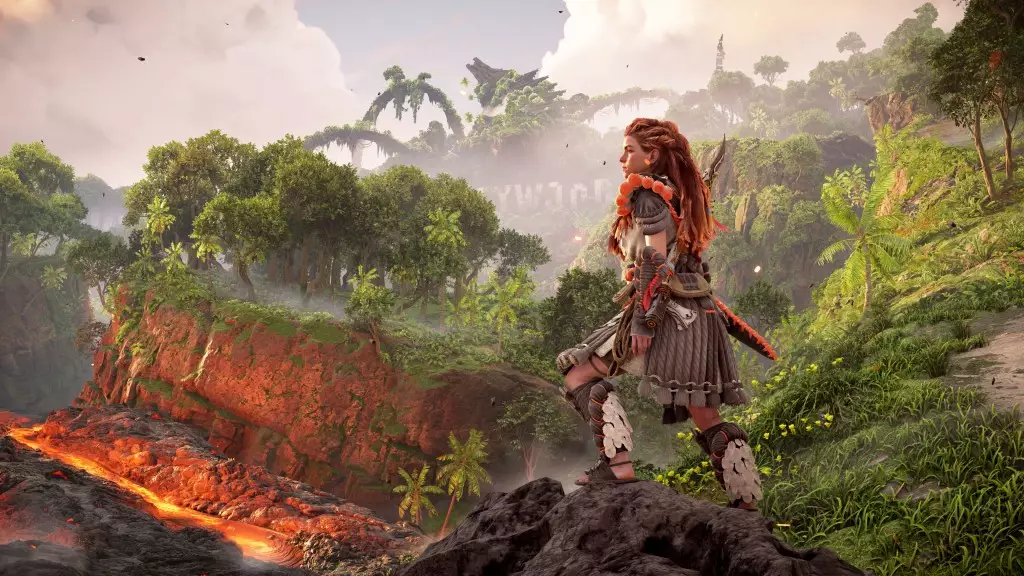The incorporation of artificial intelligence (AI) in gaming has become a hot topic, showcasing the rapid evolution of technology in interactive entertainment. Sony, the parent company of PlayStation, stands at the forefront of this development by utilizing AI to enhance the gaming experience. Unlike Microsoft, which has loudly championed its AI initiatives for game design and development, Sony appears focused on refining the mechanics of gaming through AI-assisted technologies. This subtle yet impactful strategy hints at a broader vision for integrating AI into the gaming realm, opening up exciting possibilities for players.
Unveiling New Dimensions with AI Technology
Sony’s internal presentations have teased an intriguing new dimension of gaming, as revealed by a leaked video featuring a prototype that blends AI with character interactions. While many gamers relish immersive storytelling and narratives, the technology behind these experiences often remains opaque. The video, showcasing the iconic PlayStation character Aloy from the acclaimed Horizon series, demonstrates cutting-edge AI-generated animations, dialogue, and voice synthesis. The implication that players could engage in natural dialogues with beloved characters speaks volumes about the potential AI holds for enriching player experiences.
The AI technology demonstrated in the video is no mere gimmick. By utilizing powerful tools like OpenAI’s GPT-4 and Sony’s proprietary Emotional Voice Synthesis, the experience promises a more nuanced interaction compared to traditional scripted dialogues. However, one must ponder the implications of this evolution. What does it mean for the narrative-driven nature of games if AI replaces well-crafted, human-centered scripts with dynamically generated text?
AI: A Double-Edged Sword in Video Game Design
The excitement surrounding AI-driven gaming is tempered by an inherent uncertainty. For one, the artistry behind storytelling in video games has been celebrated for its emotional depth and authenticity. The Horizon series, known for its rich narrative and character development, is a testament to this artistry. While AI can generate conversations on the fly, it raises the question of whether these generated interactions can genuinely capture the emotional gravitas that human-written scripts have.
Moreover, the stakes are higher considering the recent labor issues surrounding AI in voice acting. The ongoing SAG-AFTRA strike highlights the contentious relationship between Hollywood and artificial intelligence, creating a cautionary backdrop for video game developers, including Sony. By moving towards AI-generated interactions, there is a risk that the unique touch that professional voice actors bring to character portrayals could be undermined. This potential threat looms large, especially when players have come to value the richness of performances by established actors like Ashley Burch, who has given life to Aloy with captivating authenticity.
Players’ Connection: What are the Risks of AI Integration?
As gaming continues to push boundaries with technological advancements, the emotional tether between players and characters must not be overlooked. The instant gratification of having dynamic dialogues may diminish the profound connections players form with characters that have been molded through careful writing and compelling voice performances. The essence of storytelling lies in the universal themes that resonate with players, making them feel part of a larger narrative tapestry.
Furthermore, the implications for player agency and choice raise eyebrows. How might an AI-driven dialogue system shift the power dynamic in gameplay? If characters can engage in endless conversations without the constraints of a predetermined script, players might find themselves overwhelmed or indifferent to the narrative arc. A well-crafted story is often a journey, and AI-generated narratives risk robbing players of that intentional experience.
Exploring the Potential of AI: A Cautious Optimism
While these concerns present a valid case for skepticism, the potential benefits of AI cannot be ignored. As Sony forges ahead in its quest for innovation, it is imperative that they strike a balance between embracing new technology and preserving what makes video gaming special. Instead of solely focusing on voice generation and dialogue, exploring AI’s capabilities in other realms, such as enhancing game environments or personalizing player experiences, might yield richer results.
The future of gaming is by no means fixed, and Sony’s venture into AI-driven interactions is just one thread within a complex tapestry of progress. Will it empower gamers to embark on deeper emotional journeys, or will it dilute the essence of storytelling that has defined the medium? Only time will tell, but the conversation is just beginning. As we stand on the brink of a new era, questioning the implications of these technologies can only serve to enrich the discussions around the future of gaming.


Leave a Reply